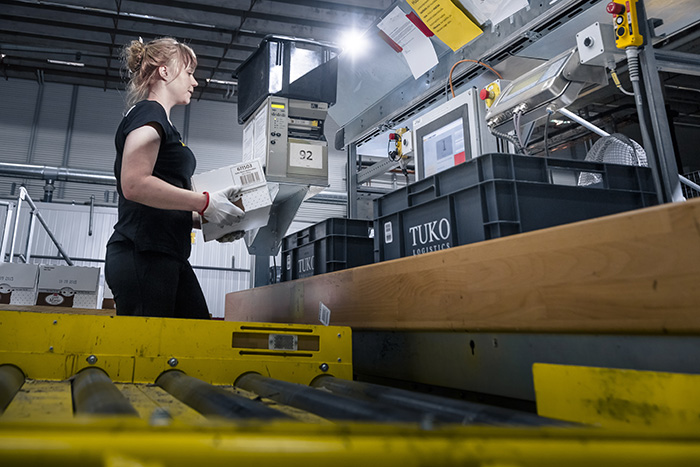October 31, 2018
By Bruce Bleikamp, Sales Manager, Cimcorp
In virtually all industries, companies are experiencing year-round labor shortages in their warehouses and distribution centers. The pains of insufficient staffing hit especially hard during peak periods, when sales spike and orders start pouring in, such as in the holiday season for most consumer goods companies.

Warehouse managers and staff in manual facilities know full well the struggles of trying to keep up with a dramatic influx of orders. At the same time, they are trying to manage growing stock levels, as manufacturing raises output and variety in response to demand. Many companies turn to seasonal labor to get by, but that creates additional costs and challenges like providing proper training. With consumers expecting fast deliveries, facilities have to meet more frequent orders without sacrificing accuracy.
In reality, warehouses and distribution centers don’t have to rely solely on manual operations anymore. Now, they can turn to automated technology. There are four ways that automation can help facilities not only overcome their labor shortage problems, but also optimize operations during busy peak seasons.
With companies producing more products in addition to seasonal goods, warehouses are quickly running out of space to store everything. Facilities that were built to house a few hundred SKUs now have to accommodate thousands. Companies can look towards automated solutions that offer high-density storage to optimize space in their existing facilities. These systems can often store more products while using up to 50 percent less space. Floor-based storage is a good option, where products are stored in stacks on the warehouse floor and retrieved from above, eliminating the need for space-consuming aisles and conveyor sequencers.
In the months leading up to an anticipated peak season, many warehouse and logistics managers try to double their workforce by hiring seasonal staff. Due to staffing needs, they end up hiring practically anyone who walks through the door, so there’s not enough effort placed on proper vetting and training. Ultimately, this creates bottlenecks and roadblocks once orders start coming in.
With a scalable, modular automated solution, warehouses can instead use automation to get through upticks in sales and peak demand times. By design, these systems can work faster and more accurately than manual pickers with all checks and balances done through sophisticated software, virtually eliminating picking errors.
One of the biggest causes of resistance to automation is the possible displacement of jobs. However, most facilities are running short staffed as is. With older members of the workforce retiring and young graduates less enthusiastic about physically demanding warehousing jobs, the hiring pool is scarce. By letting automated systems take over more of the product handling, companies can better leverage their current staff and reallocate them to new roles in supervising systems or handling products with special requirements. These new roles are less strenuous – particularly in facilities with heavy loads – and more technology-focused, which can be a draw for younger members of the workforce.
Managing an unstable workforce comes at a high financial cost as managers deal with high turnover rates, training costs and safety issues. The strain of hiring double the number of staff members during a peak season presents major expenses, given the wages for each additional employee. In order to keep orders flowing, some staff have to work overtime, which comes with extra pay. Other facilities add overnight shifts, so they end up paying around the clock.
Automation minimizes the amount of required seasonal staff, which in turn leads to savings in staffing costs. Further, these systems can keep running 24/7 so employees don’t need to work as many overtime hours or night shifts. These savings quickly add up, enabling companies to realize a rapid return on their investment while easily navigating busy peaks.
Once your warehouse or distribution center decides to automate, you must then determine the right solutions as well as the areas that will see the greatest impact. A well-experienced provider can come in and assess your facility and current products and processes. They will be able to determine where it would be best to automate or stay manual from a cost and operational perspective. With the right combination of automation and manual handling, labor shortages will be a thing of the past and you can optimize material flow all year round.
 Bruce Bleikamp, Sales Manager, Cimcorp
Bruce Bleikamp, Sales Manager, Cimcorp
Scott Ellyson, CEO of East West Manufacturing, brings decades of global manufacturing and supply chain leadership to the conversation. In this episode, he shares practical insights on scaling operations, navigating complexity, and building resilient manufacturing networks in an increasingly connected world.